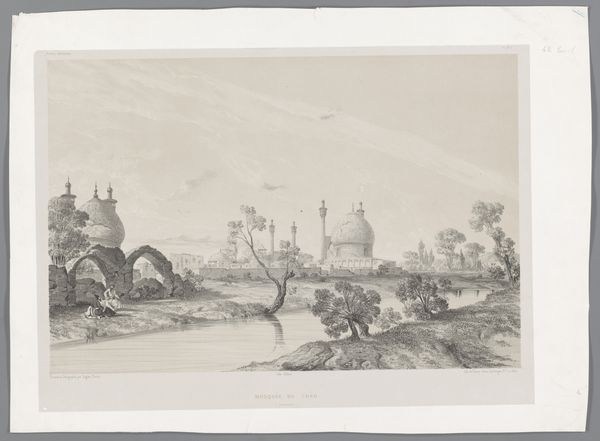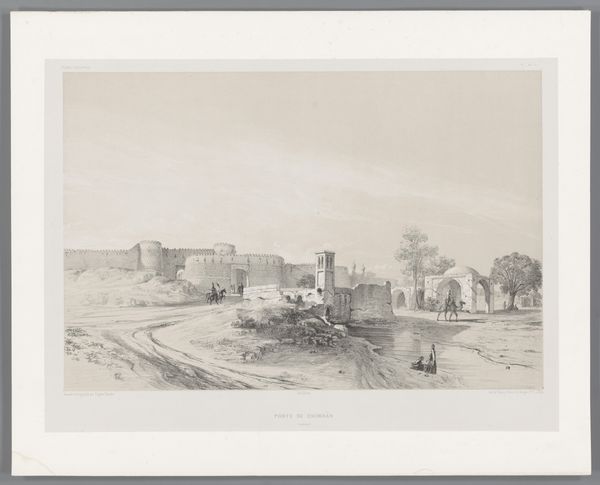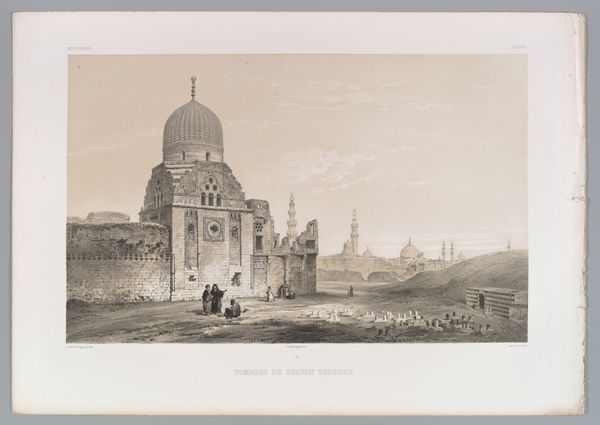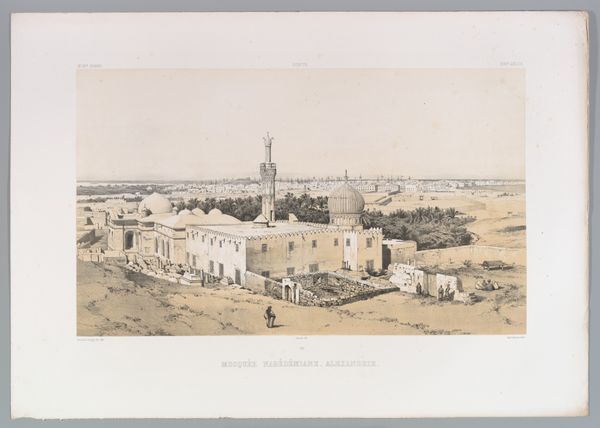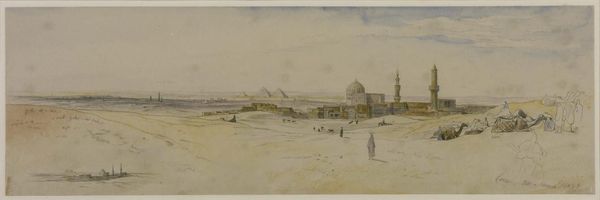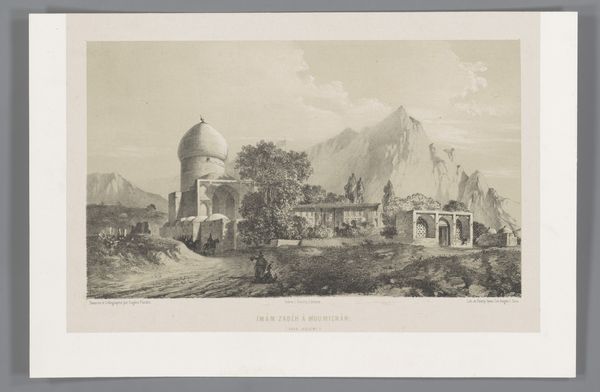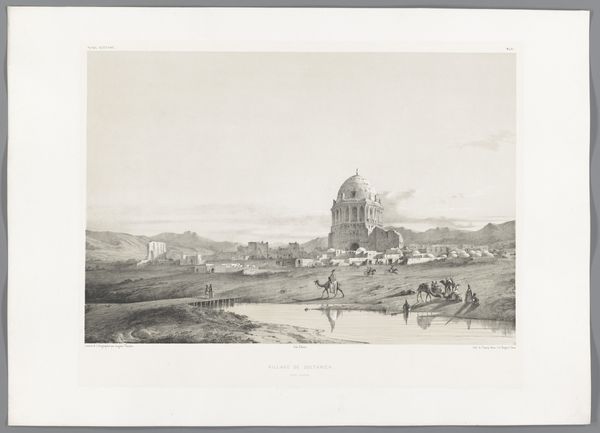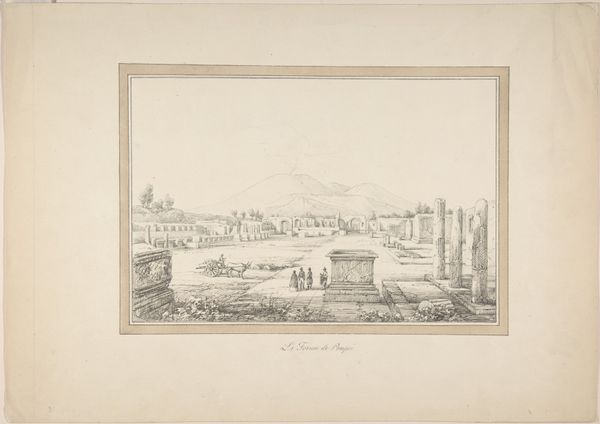
#
aged paper
#
light pencil work
#
pale palette
#
muted colour palette
#
pale colours
#
pencil sketch
#
light coloured
#
white palette
#
pale shade
#
watercolor
Dimensions: height 441 mm, width 549 mm
Copyright: Rijks Museum: Open Domain
Curator: This lithograph is titled "Imamzadeh van Hussein in Qazvin", created between 1843 and 1854 by Eugène Flandin. It’s held in the Rijksmuseum collection. Editor: It’s hauntingly beautiful, isn't it? There's a striking balance of light and shadow, and an ethereal quality that I find compelling, despite the pale, almost monochromatic palette. Curator: Flandin's work provides invaluable insights into 19th-century Persian social landscapes, revealing how religious structures were integrated into community life. What do you make of the figures populating the scene? Editor: I see figures moving along paths that subtly draw the eye into the composition. I'm also drawn to the textural details he’s captured with such delicacy—the aged paper enhances that, doesn’t it? Curator: Precisely. Each stroke suggests a complex interaction of culture and individual experience. It reminds us of the colonial gaze inherent in such depictions, and how they influenced Western perceptions of the East. Notice how this piece invites us to consider issues of representation. Editor: It's subtle, the interplay of structures and nature creates a certain harmony. The dome on the mausoleum provides such a strong, formal presence against the skyline. The perspective invites contemplation. Curator: This image, produced during a time of intense cultural exchange and colonial ambition, serves as a historical artifact. Its aesthetic beauty cannot be divorced from its political context. It prompts reflection on whose stories are told, and how. Editor: Absolutely. What I find equally interesting is Flandin's compositional choices. He masterfully directs the viewer's eye through strategic placement and gradation of tone. Ultimately it speaks of balance and intentional artistic choices, however subtle. Curator: And those choices tell a larger narrative, reflecting the complex historical dynamics of the time. Considering all these factors adds greater weight to this serene depiction. Editor: Yes, the composition holds complexities of power and influence that shift our perceptions about its beauty. Thank you.
Comments
No comments
Be the first to comment and join the conversation on the ultimate creative platform.
